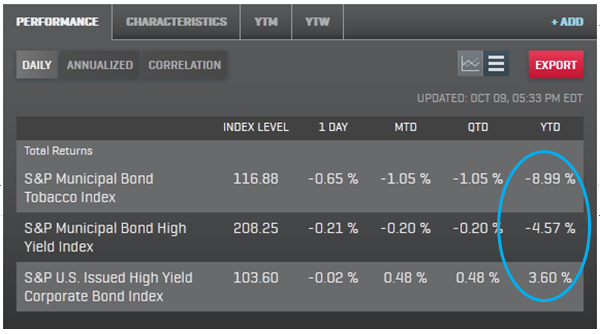While the stock market was up sharply on Thursday and rose a bit more on Friday amidst rumors of some talks in Washington, not everyone thinks we’re out of the woods. In fact, other parts of the financial system are taking precautions in case the worst – a government default – happens. Hopefully both these trends will continue: some large market moves combined with disaster preparation might convince Washington that Wall Street really does want all this nonsense settled, the debt ceiling raised, the government re-opened and (maybe) Congress to get back to work. The market moves this past week were a start but not big enough to carry a lot of conviction. Moreover, a big drop in response to stubbornly little progress early in the week might have scared Congress into some activity.
The disaster planning is mostly about Repos – short term collateralized loans. The most common collateral since the financial crisis has been short term treasury securities. In normal times, the credit quality of treasuries is as close to impeccable as anything. These are not normal times. Discussions about re-writing the legal agreements behind repos are going on, some money market funds are selling treasuries for fear of a default and Senator Sherrod Brown, a Democrat on the Senate Banking Committee asked two major banks which arrange some $2 trillion of repos what would happen in a default. In Hong Kong, the exchange is asking for additional collateral in some transactions.
Understanding and planning for investment risks is never easy. The hardest risks to plan for are those with a very small chance of occurring, but if they happen the damage would be immense. Outside of finance these might be things like nuclear power plant meltdowns or 100-year storms. Yes, such things do happen: ask Japan about Fukushima or recall “Super Storm Sandy” in New York City about a year ago. A default by the US treasury – the key underpinning and support for the world’s financial system — would be a low probability event causing immense damage.
The posts on this blog are opinions, not advice. Please read our Disclaimers.





